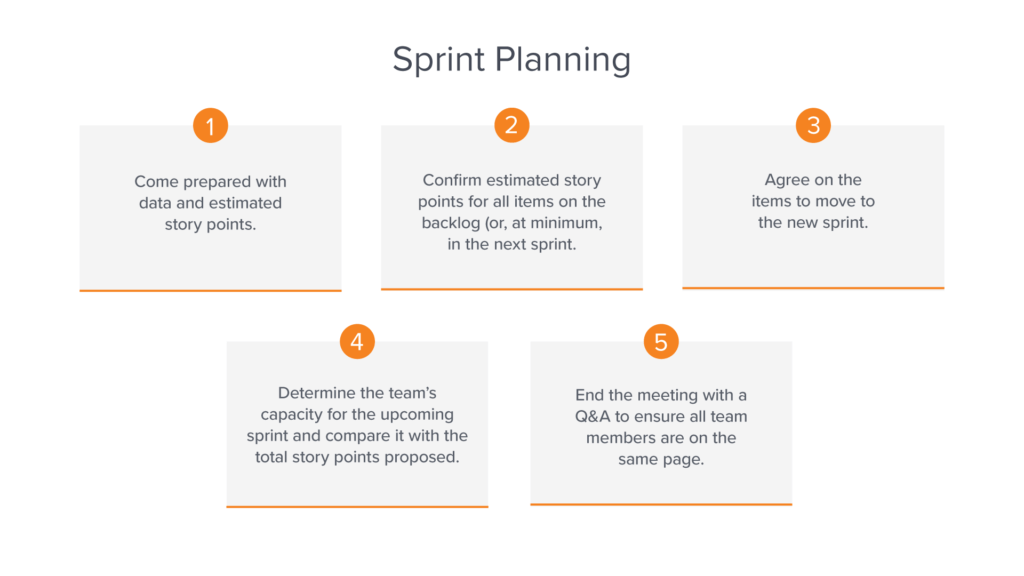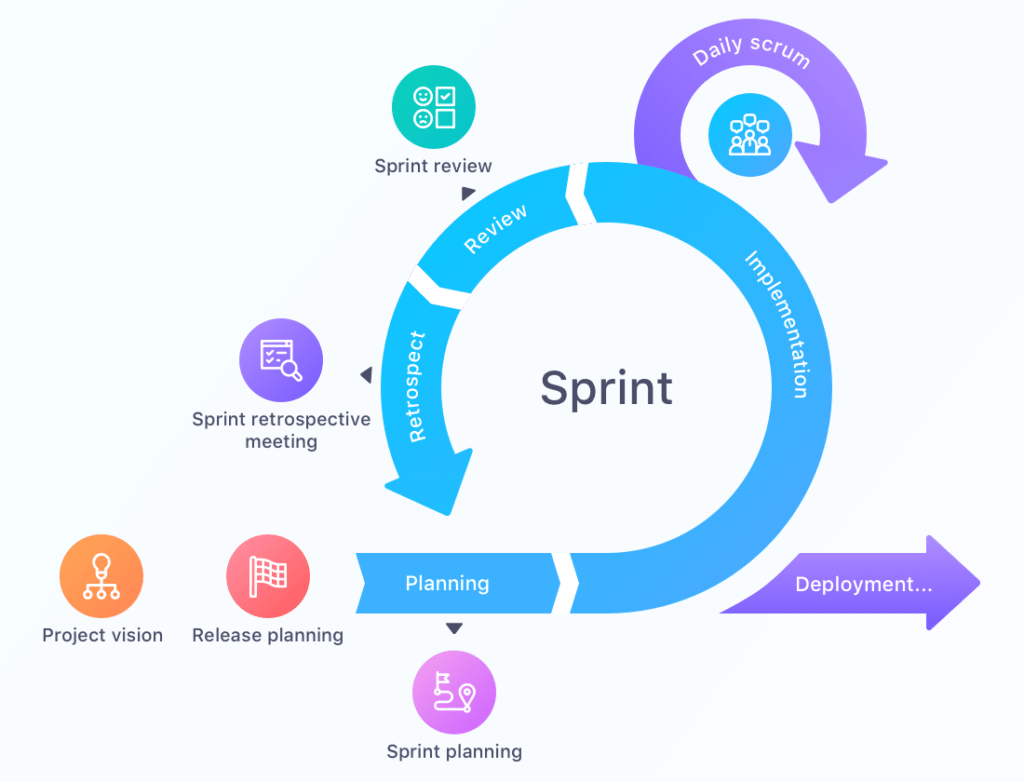Home > Blog > 10 Reasons Why Agile Sprint Planning Is Crucial for Product Management
10 Reasons Why Agile Sprint Planning Is Crucial for Product Management

Information matters. But what information team members have and when they get it is just as important as the information itself. In the world of Agile product management, information is best funneled to teams through sprint planning, an essential Agile productivity tool. If sprint planning is not used – and product owners or scrum masters don’t take the time to schedule upcoming work properly – team members might misunderstand what they must focus on and when. For maximum efficiency and successful product management, spring planning is crucial to success.
In this article, we’ll look at agile sprints and sprint planning, how they work, and learn ten reasons why Agile sprint planning is so important for product management.
What is sprint planning?
Sprint planning centers on project or scrum teams and which tasks they will complete in an upcoming timeframe. A sprint is simply a short period when a scrum team works to achieve a specified amount of work. It sounds simple, but that belies its power. Sprint planning helps advance productivity, understanding, and morale by ensuring that everyone involved knows exactly what they should be doing and when. It helps teams get project segments completed sooner, better, and more enjoyably, which helps advance the overall project more quickly.
How Sprint Planning Works
All sprint efforts start with a meeting. Product owners or scrum masters choose specific items from a product backlog that must be completed to advance project goals in a sprint planning meeting.
Working with the development or scrum team to ensure that everyone is on the same page, this meeting ensures that developers can:
- Identify and optimize specific tasks and skills for team members.
- Identify and maximize clock bandwidth and performance for future sprints.
A sprint planning meeting happens after a task is chosen from the product backlog. Completing that task becomes the sprint planning goal for that sprint. Sprint planning meetings also occur after a previous sprint has been completed, and a sprint retrospective takes place.
A sprint retrospective is a look back or review of what work was just completed. The project team, led by the scrum master, examines the entire sprint and draws lessons learned from the process. The purpose is to identify what worked, what didn’t work, how things could have been done better, and what can happen to make the next sprint even more productive.
The sprint retrospective is a key element to improving the entire sprint planning process, as well as necessary to advance the project more quickly, accurately, and efficiently.
The Sprint Roll Call
You can’t tell the players without a scorecard. So, it’s important to know first who exactly participates in a sprint and a sprint planning meeting. Everything starts with the scrum team. Named for the rugby formation, a scrum team is simply a framework for the project team. It’s a supportive gathering of project team members who are grouped together to solve specific problems or tasks through an Agile structure in a sprint or series of sprints.

The scrum master ensures that everyone and everything stays on track. They see that the iterative methodology is being correctly and efficiently applied, while facilitating and coaching team members. The scrum master also helps solve problems, remove impediments, and shield team members from outside distraction or interruption. In short, they create an optimized sprint work environment.
Holding the bigger-picture perspective, the product owner represents the customer’s interests and protects the business aspects during the process. They are responsible for keeping the overall sprint planning process and Agile work environment on track, along with maximizing the value of the work completed by the project team.
The Sprint Order
A product sprint has a sequence that starts with a sprint planning meeting where individual tasks are prioritized and assigned. A sprint backlog is created that contains all of the deliverables of the sprint. The sprint backlog shouldn’t be confused with the product backlog, which is an inventory of all of the overall project tasks that need to be addressed over the lifecycle of the project.
Next, a daily stand-up meeting is set. This is a once-daily meeting where every team member and the scrum master update each other on the previous day’s progress and what’s scheduled for that day. Typically held in the morning, daily stand-ups can take place at any time, depending on the scrum master and the project team’s work habits and optimized performance strategy. In addition to checking in with each other, daily stand-ups also help identify problem areas and bring resources to those challenges.
When the sprint is completed, the work is reviewed by all project stakeholders to gain their feedback, a key part of the iterative Agile process. Once received, their feedback is incorporated and, if necessary, added to the final activity of a sprint, the sprint retrospective.
10 Reasons Why Sprint Planning Is Crucial for Product Management
Sprint planning works. It’s a proven methodology to solve problems quickly, effectively, and profoundly that offers key benefits that make it crucial for successful product management. Here are ten of the best reasons to use it to optimize your product sprints.
- Enhanced Communication – Sprint planning provides an ideal platform to advance communication between the development team. Team members can more easily identify their dependencies, communicate bandwidth and difficulties, set achievable goals, and plan tasks.
- Prioritized Deliverables – After examining the backlog, the product owner can rank tasks by importance. The scrum team can then break those down into smaller, achievable tasks, assuring that vital tasks are completed in the earliest sprints.
- Burnout Avoidance – Because sprint tasks aren’t simply assigned from “on high” but rather chosen based on capabilities and estimations, teams buy-in more to each task. That way, morale is preserved, and burnout is avoided.
- Advanced Focus – Breaking down a project into achievable tasks ensures that each team on each sprint can devote their complete effort to solving only the problem at hand.
- Reduced Costs – Sprint planning empowers teams to adjust and adapt to any change in the development process. They can instantly pivot from one challenge to the next or quickly incorporate different needs, wants, or circumstances. This helps avoid costly mistakes or wasting time, money, and valuable resources.
- Greater Transparency – It’s all about being on the same page. Sprint planning makes sure that’s the norm, as teams share all information and everyone works toward the same established goal.
- Improved Morale – On a sprint, everyone has a voice. Each project team member is respected, and their opinion is heard. They are valued. That helps promote productivity, better problem solving, and greater buy-in and fulfillment.
- Better Quality – Quality control ensures that project outcomes are the best they can be. That involves intensive review. The sprint process is built on constant review down to a granular level, ensuring that everyone’s input and review helps return better results in the end. The result? Better products in every iteration.
- Superior Customer Satisfaction – Customer loyalty matters, and customers develop greater loyalty and buy-in when they, too, feel heard. Because customers contribute important feedback to the sprint process, the final product usually meets or exceeds their expectations.
- Reduced Risks – With sprint planning, a project team is not simply given marching orders and sent off to complete a task. There are multiple opportunities to address problems, changes, and issues throughout the process. Daily stand-ups also provide ample opportunities to raise concerns and incorporate feedback. Problems are addressed when they’re raised, instead of at the end of production when there’s no opportunity to fix them. Multiple, meaningful feedback loops and guaranteed input for all lead to greatly reduced risk.
Why Sprint in the Long Run
There’s an old aphorism that plans are useless, but that planning is invaluable – so the value happens in the process. That is what sprint planning is all about, creating a process that empowers leaders, team members, and owners to gain the most from working together to create the best deliverables. The benefits it offers make it crucial to getting the best results from any Agile product management efforts.
In order to maximize the results of sprint planning, product teams should employ powerful software tools that incorporate easy collaboration, task management, and third-party integrations for a more agile, personalized, and successful product management experience. Combining tools like these with spring planning guarantees increased productivity and high-quality results.




